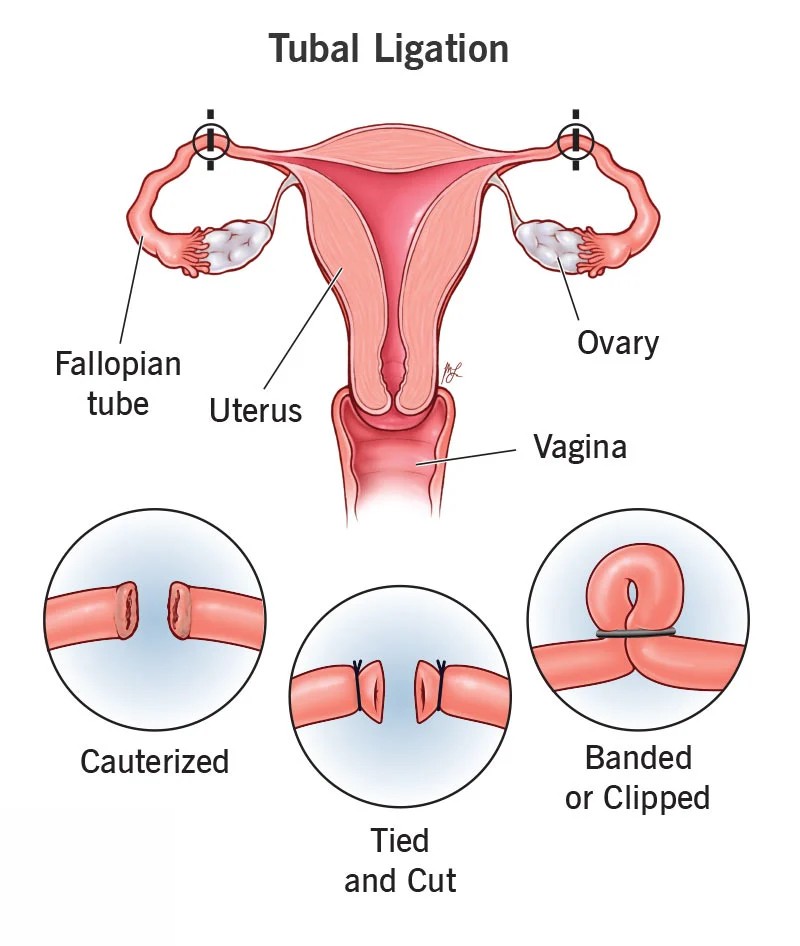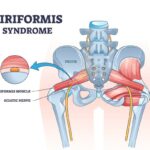What is Tubal Ligation (Tube Ligation)?
The name of the operation performed by experienced and expert gynecologists to close the activation of the fallopian tubes of the woman is called tubal ligation. The operation, which is performed laparoscopically or openly, is performed with general anesthesia. The application, which is carried out without any security problems with the high-level technical equipment of our hospital, is definitely done in the operating room environment.
The working principle of these tubes in women is that they are channels that bring the sperm and egg together during pregnancy. These tubes do not have a feature such as producing hormones and supporting the body. After this procedure, the person does not experience sexual reluctance or the onset of menopause. The duration of the operation is short.
After a certain period of time after the application, if the person prefers to be taken back and returned to their original state, microsurgical surgery is required to open the channels. This process may not give the expected quality result.
Tubal ligation is known as a method recommended for women who have finished their fertility. It is of great importance to consult your doctor in order to determine the appropriate conditions in terms of time and safety before the withdrawal process is performed. It is recommended to obtain written consent from the spouses before the transactions are carried out.
Due to the fact that the application is performed in the operating room environment and requires anesthesia, various complications may occur during the procedure. For this reason, it is extremely important that the person is informed by his doctor while making his decision.
Why is Tubal Ligation (Tube Ligation) Performed?
Tubal ligation is one of the most commonly used surgical sterilization procedures for women. Tubal ligation permanently prevents pregnancy, so you no longer need any form of birth control. However, it does not protect against sexually transmitted infections.
Tubal ligation can also reduce your risk of ovarian cancer, especially if the fallopian tubes are removed.
However, tubal ligation is not suitable for everyone. Talk to your doctor to make sure you fully understand the risks and benefits of the procedure.
Your doctor may also prescribe long-acting reversible contraceptives, such as an intrauterine device (IUD).
For Whom is Tubal Ligation (Tube Ligation) Surgery Suitable?
Patients who will undergo tubal ligation surgery should be patients who have completed the number of children and never think of children again. It should not be done in the presence of the slightest doubt in any of the spouses. In our country, it can be applied to women over the age of 35 who have 2 or 3 children. Signatures of both spouses are required.
In addition, tube ligation surgery should be recommended to patients who have a life-threatening risk when they become pregnant again.
Who is not Suitable For Tubal Ligation Surgery?
It is not recommended for couples who have not yet completed the number of children, regardless of age. Again, even if it completes the number of children, it is not preferred under the age of 35. It should not be done for those who are in the process of separating from their spouses, because of the possibility of a new marriage and child desire in the future.
What are The Advantages and Disadvantages of Tubal Ligation?
Advantages:
Protection starts immediately after tubal ligation surgery. In drugs, on the other hand, the protective effect occurs after a certain period of use.
It has a higher protection effect than all other methods. In addition, it is protected from the side effects of other hormonal methods or spirals to be used. Once a safer is made, it has lifetime protection. For this reason, the fear of pregnancy is completely erased from the minds of the patients. In addition, breastfeeding mothers are not likely to affect the milk. It does not cause any disorder in sexual intercourse. Tube ligation surgery is very affordable.
Disadvantages:
The most important disadvantage is that it is a permanent method and the probability of return is low.
What are The Harms and Side Effects of Tubal Ligation?
Tubal ligation surgery may seem advantageous in many ways, but it has negative aspects as well as advantages. It does not have any side effects other than complications after standard surgical procedure that may occur after laparoscopy, but other factors such as being permanent can be counted as its disadvantages.
-
Persistence:
Tubal ligation, or cord tying, as it is commonly known, is a permanent method. Often times, although parents or women seem very determined, they may change their minds and want to have a child. In such a case, the chance of conceiving by normal means is less than 0.1%. In vitro fertilization can be used, but the risk of developing an ectopic pregnancy is greatly increased after tubal ligation.
-
Ectopic Pregnancy:
Tubal ligation is permanent, but rarely, naturally developing pregnancy can be seen. On the other hand, IVF treatments are still a viable option for these people. However, the risk of ectopic pregnancy increases after tube ligation.
-
Risk of Infection:
Under normal circumstances, an infection is not expected after professional tube ligation surgery, but there is always a risk of infection. Infection of the small incisions made can lead to serious problems. Therefore, to be extremely careful for a few days after the procedure; It is necessary to keep the incision areas dry and clean.
-
Does Not Protect From Sexually Transmitted Diseases:
Many women believe that tube ligation will protect them from sexually transmitted infections, but this is not true. Tubal ligation is based solely on preventing fertilization by removing the fallopian tubes. Unlike standard contraception methods, it does not protect against diseases that can be transmitted during sexual intercourse.
When Should Tubes Be Connected?
- Any day of the menstrual cycle where there is no suspicion of pregnancy
- Between days 6–13 of the menstrual cycle
- Within 2 days or 6 weeks after birth
- After abortion or abortion Immediate or within the first 7 days (if there is no risk of infection)
How is Tubal Ligation (Tube Ligation) Surgery Performed?
Before tube ligation surgery, spouses should be determined for this situation. For the operation, only the consent of the woman is not enough, for this, the spouses must decide to have it done as a result of a joint decision.
After the spouses have completed the number of children they want, they must make such a request. It is a process that is considered irreversible.
Spouses should decide based on this. It is possible to open it later, but the child success rate may decrease.
During The Surgery
If you are having tubal ligation as an outpatient procedure, either a needle is inserted or an incision is made in your belly button so that your abdomen can be inflated with gas (carbon dioxide or nitrous oxide). A laparoscope is then placed on your abdomen.
In most cases, your doctor will make a second small incision through the abdominal wall to insert special instruments. Your doctor uses these instruments to close the fallopian tubes by destroying parts of the tubes or plugging them with plastic rings or clips.
If you have a tubal ligation after a vaginal delivery, your doctor will likely make a small incision below your belly button to gain easy access to your uterus and fallopian tubes. If you have a tubal ligation during a cesarean section, your doctor will use the incision made to deliver the baby.
After Surgery
If gas was used during tubal ligation, the gas will be removed when the procedure is finished. You may be allowed to go home a few hours after intermittent tubal ligation. Having tubal ligation right after birth usually does not require a longer stay in the hospital.
You will feel some discomfort at the incision site.
You may also experience:
- Abdominal Pain or Cramping
- Tiredness
- dizziness
- Gas or Bloating
- Shoulder Pain
Matters to be Considered During the Recovery Period are as follows:
- The nutrition program recommended by the doctor should be followed.
- Prescribed drugs should be taken regularly.
- You can take a bath 48 hours after the procedure, but avoid forcing or rubbing the incision area. Dry the area carefully after bathing.
- Avoid heavy lifting and sex until your doctor tells you it’s safe.
- You can gradually return to your normal activities as you begin to feel better. Your stitches will unravel and will not need to be removed. Check with your doctor to find out if you need a checkup appointment.
Call your doctor if you have concerns that you are not healing properly.
Call your doctor right away if:
- 38 C or higher fever
- Fainting
- Severe abdominal pain that persists or worsens after 12 hours
- Bleeding
- Foul-smelling discharge from the wound
Tubal Ligation (Tube Ligation) with Laparoscopy (Closed Surgery)
Tubal ligation with laparoscopy is performed in the operating room, under sterile conditions, under general anesthesia. The uterine tubes and ovaries are examined with the help of a mini telescope called a laparoscope, which is applied through a small incision in the navel. In order to use other tools required for tubal ligation, one or two more small holes should be made in the abdominal wall.
With the help of instruments passed through these holes and under laparoscopic observation, the tubes are cauterized on both sides and connected by placing a small clip (Hulka clip) or silicone rubber rings (Yoon Ring). When using silicone tapes; After both tubas are held especially from the isthmic region, the process is performed by passing a ring-shaped tape to these areas.
In the part of the tube where the silicone ring is applied, blood flow is blocked, scar tissue forms over time, and sperm and egg passage cannot be provided from here.
After the tubes are tied, the instruments are removed, sutures are placed in the navel and one cm incisions near the navel, and taped. Patients can return home a few hours after the procedure.
Laparotomy (Open Surgery) and Tubal Ligation (Tube Ligation)
Laparoscopic tubal ligation is inconvenient in patients who have had previous abdominal operations such as cesarean section, cyst, fibroid operations (especially operations performed with a classical incision called laparotomy), since adhesions (adhesion) between the tubes, peritoneum and intestines are high in the abdomen; bowel complications may occur.
For this reason, tubal ligation with laparotomy, which is the classical method, is important in order to prevent complications for patients who have previously had an operation on the abdominal wall and therefore have incision scars in the abdomen.
Tubal Ligation (Tube Ligation) with Mini Laparotomy (Open Surgery)
In mini laparotomy, tubal ligation is performed by making a 3-4 cm incision in the lower abdominal region below the umbilicus and just above the pelvic bone.
This procedure can also be performed shortly after normal delivery.
What are Tubal Ligation Techniques?
The physician performing the surgery determines the most accurate and healthy method in accordance with the person and the situation. The methods to be used for this;
-
The Irving Method:
It is performed by handling the tuba from its lateral region and burying the ends in the mesosalpinx after cutting.
-
Labhardt Surgery:
The peritoneum on the tube is separated and the tube is cut by 1.5 cm. The cut ends of the tube are sutured and then the peritoneal defect is repaired.
-
The Pomeroy Method:
The tube is removed from its middle part, the loop formed is connected with the catgut and this part of the tube is cut. Over time, the catgut begins to melt and the cut ends of the tuba are separated from each other, thus disrupting the continuity of the tuba.
-
Madlenary Method:
It is based on crushing and binding the double field in the central region of the tube. Although it is a relatively more practical method, the rate of success is high and adhesion is possible.
Misconceptions in Tubal Ligation:
- Disruption of menstrual order due to tubal ligation,
- Earlier menopause with tubal ligation,
- Abdominal swelling due to tubal ligation,
- Decreased sexual desire with tubal ligation.
After the tubes are connected, the situations described above have no connection whatsoever. Complications of laparoscopic tubal ligation performed under sterile conditions and with a meticulous approach are rare. The failure rate in tubal ligation is extremely low if it is performed in experienced hands.
For those who want to get pregnant again after tube ligation, the operation of opening the tubes with microsurgical methods can be performed; however, the chance of opening the tubes in this operation is 80% on average.
Today, those who have tube ligation prefer to use the in vitro fertilization method instead of microsurgery when they want to get pregnant again.
Tubal Ligation (Tube Ligation) Why Is Undoing?
Tubal ligation retrieval operation enables women who have had tubal ligation before to become pregnant again without the need for any medical support.
You may regret the tubal ligation operation for many reasons:
- Being too young during the operation
- To have an operation in the year of birth
- Marriage
- Lack of knowledge about tubal ligation and different birth control methods
- Having undergone an operation with peer pressure due to health problems.
Tubal reattachment may not be suitable for everyone. By considering the following situations, your doctor will determine whether tubal ligation retrieval is suitable for you and whether it will be successful:
- Your age and body mass index
- Tubal ligation type
- Damage to the fallopian tubes
- Remaining tubal length
- Other fertility factors such as sperm and ovary quality
The retrieval operation can only take place if most of the tubes are healthy. If your fallopian tubes are blocked with a method such as clips or rings, the operation has a much greater chance of being successful than the technique of closure by burning. Tubal ligation techniques such as Essure and Adiana techniques are irreversible.
Frequently Asked Questions
-
Does Tubal Ligation Affect Sexuality?
Tubal ligation does not affect sexuality. Tubal ligation is the removal or cutting of the fallopian tubes and prevents natural conception. Sexual desire is related to hormones. The surgical procedure performed is limited to the fallopian tubes only. Therefore, it does not affect sexuality.
-
Is Ligation of Tubes Harmful?
Tubal ligation has no known harm. However, being an irreversible process requires thinking before making a decision. In some cases, women who have had tube ligation may give up their decisions, and there is always a chance of pregnancy after in vitro fertilization treatment.
-
Does Tubal Ligation Cause Menstrual Irregularity?
Tubal ligation is a surgical procedure performed only on the fallopian tubes, which does not affect hormones. Therefore, it does not cause menstrual irregularity. Menstrual irregularities are largely due to hormonal irregularities. If the person does not have such a problem before, there will be no menstrual irregularity.
-
Is Tubal Tipping the Final Solution?
Tube ligation makes it impossible to have children naturally. It is a definite solution. However, in some cases, natural pregnancy can be seen with the tubes repairing themselves. However, this situation is very rare. There is a one-in-a-thousandth probability of a natural pregnancy.
-
Does Tubal Ligation Cause Pain?
Tubal ligation does not cause pain under normal conditions. However, in some cases, pain may be felt after the surgical procedure. Your doctor will give you the best information about possible complications as well as personal circumstances.
-
Will the Connected Tubes Be Opened Again?
Connected tubes can be reopened, but this process is not preferred as it is quite risky. With the development of IVF treatments, the opening of the tubes is generally not applied. Instead, IVF treatments can respond to people’s wishes to have children.
-
Can Someone Who Has Their Tubes Tied Get Pregnant?
Under normal circumstances, it is impossible for someone who has their tubes tied to become pregnant. Tube ligation involves ligating the fallopian ducts. In this way, pregnancy does not occur naturally and pregnancy does not occur.
However, IVF treatments can help get pregnant again. In addition, although it is very rare, pregnancy may occur after tube ligation surgery.






